How Smoggy Skies in China Changed the Way Our Family Shops
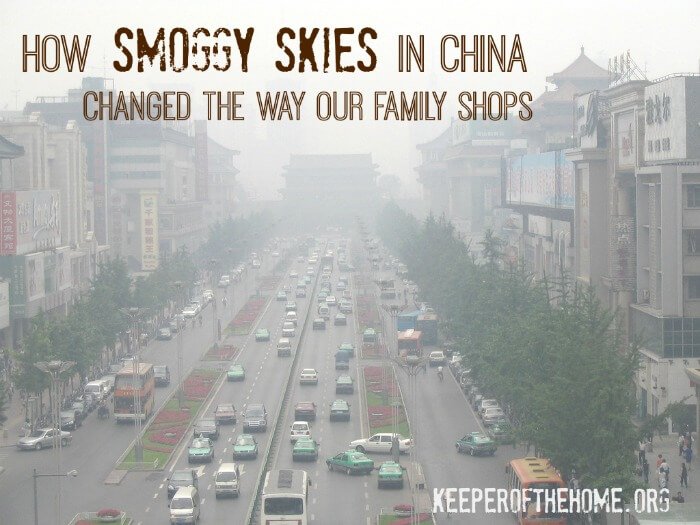
Three seemingly inconsequential words.
Made in China.
They’ve meant different things to me over the years.
At first, those silver stickers on the bottom of inexpensive products reminded us of that rapidly growing nation across the Pacific and its manufacturing boom.
At some point, “Made in China” began to mean lower-quality, cheap items that were likely to break.
More recently, I became wary of toxins, like mercury, in my little one’s toys, and I became a more vigilant, worried mother, doing my best to keep those three little words off of our playthings.
This year, however, these words took on an entirely new meaning for me.
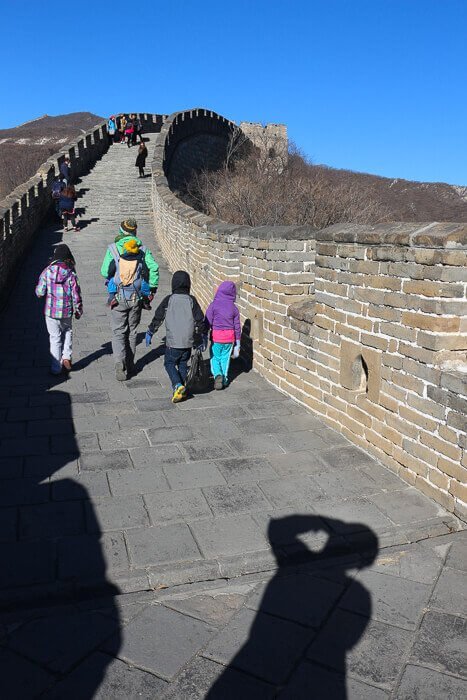
Our family arrived in China on December 6, in the cold and blustery, sky-scraper encrusted, ancient and foreign and mysterious capital city of Beijing. On our second day, we met up with my blogging friend Lorilee, her husband Bryan, and their two adorable kids.
Meeting someone in the flesh that you’ve known for a long time online tends to lead to long, intense and delightful conversations, of which we had many. We chatted about our writing and blogging, working in business together with our husbands, homeschooling our children, living our minimalistic overseas lives, and countless other topics.
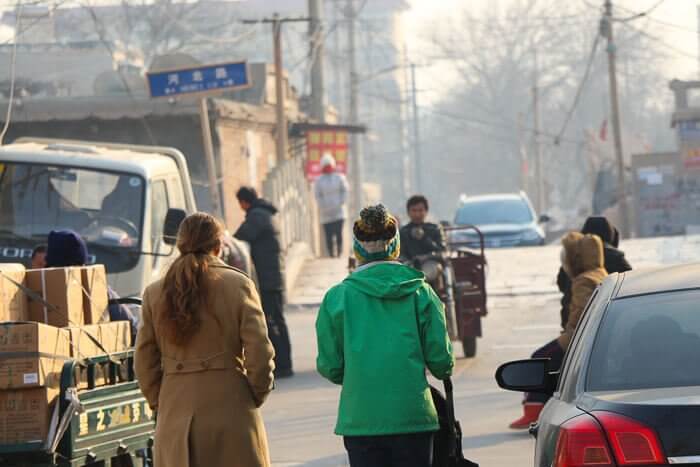
One such conversation was about the intense pollution they were living with daily in their small city of Xingtai, just a few hours south of Beijing. For them, a really good day meant an Air Quality Index score of around 300. A bad day was over 500. An awful day was 900.
To put this into perspective, it might help to know that at 101-150, sensitive groups are likely to be affected. Anything above 201 is deemed “very unhealthy” and public advisory notices encourage people to remain indoors as much as possible.
200 vs. 900. Those numbers don’t even compute in my brain. It’s simply incredible, and creating no small amount of public attention. Years upon years of a highly unregulated and rapidly growing manufacturing industry have contributed to what is becoming a catastrophic environmental issue.
So let’s go back to those three little words, and try to imagine what exactly it looks like for products to be “Made in China.” Already providing goods for a nation of 1.3 billion souls (1/5 of the current world population… let that alone sink in for just a moment), the most populous country on earth also manufactures an enormous percentage of the goods produced in the world. (1, 2, 3)
I’ll confess to being among the many for whom those numbers still don’t mean much. It wasn’t until I physically went to China, saw the vast cities spread farther than the eye can see, and smokestacks spewing pollution straight up into the middle of the metropolis that I better understood.
In most cities, the air was so thick with smog we could see its hazy presence, like a fog that wouldn’t burn off, or like hanging out in a room with 100 smokers. It dimmed the sun so much we could stare directly in midday without having to avert our eyes from the glare, and occasionally we felt the burn in our lungs when we breathed deep.

When their problem becomes our problem
Which is all very interesting, and just awful for the people in China, but you’re probably wondering what does any of this have to do with us way over here across the Big Pond?
As I watched a smokestack puffing chemicals up into the air my children were breathing one day, the air that the adorable black haired, brown eyed, giggling and innocent children we met in China were also breathing, I realized… I’ve contributed to this problem.
I do have certain stipulations about items I won’t buy from China, such as children’s toys (because of a lack of strict enough safety regulations- I stick with European or North American-made toys instead). I’m also not a regular connoisseur of dollar stores, nor do I fill my home with plastic stuff.
Yet I’m quite certain I buy my fair share of items that are manufactured, either in part or in whole, in this behemoth of a manufacturing industry. So try as I might, I can’t shake the knowledge that what equates to a “good deal” for me might also equate to sucking in a lungful of illness-inducing nastiness for someone else across the world.
Are we to blame? Is this just another post to make us consumeristic, materialistic, big bad North Americans feel guilty? No, honestly, it isn’t.
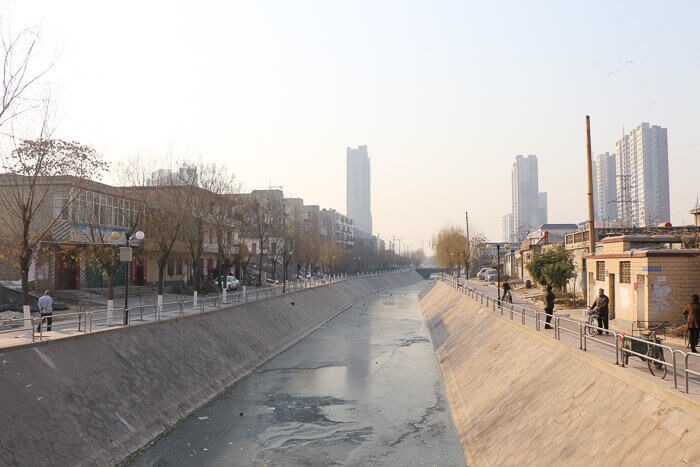
China actually wants to produce these goods, they want to have exports and something to offer to the world, and a way to build their economy, providing jobs for their hefty population. This is their choice. It isn’t wrong for them to want to do so, nor is it necessarily wrong for us to purchase the products they make.
We also need to realize that China isn’t the only manufacturing giant out there. The United States and European Union are right up there, vying for the highest value of manufacturing output, with plenty of other countries trailing close behind.
China doesn’t deserve to be vilified (and for all of their issues, they’re also implementing energy-saving and pollution-reducing policies that most of us would be loathe to make, like strict regulations that restrict central heating below a certain latitude, or alternating days on which you can drive your car). Not to mention the fact that a small percentage of products made in China are done so in a responsible and ethical manner.
That said, our desire for more and cheaper, cheaper and more, has stimulated a market for fast and furious production of poorly made items across the globe, which can be bought for mere dollars and then break within weeks or months.
It’s a never-ending cycle, one that is clogging China’s already-gray and hazy skies with long, fluted puffs of chemical smoke faster than you can say “Ramen noodles.”
The way we buy things needs to take into account more than meets our eye. There’s a bigger picture going on here.
Our travels this year taught us many things, but among them was the fact that our buying and lifestyle decisions don’t end with our bank account balance or at the foot of our driveway. They reach far and wide.
They impact issues like air, water and soil pollution around the globe. They fuel evil corporations that oppress people and destroy communities. They foster the modern day slave trade.

Our dollars and purchases also have the ability to make change in a positive way. Our choices matter.
Emily recently shared the ethical dilemma of buying cocoa and chocolate, and Jessica laid out some important reasons for adding fair-trade coffee to your shopping cart. These are small purchases we can make to say no to child slave labor, horrendous working conditions, soil degradation and loss of important farmland, and say yes to self-sustaining communities, farmers that can support their families and pass on fertile ground to their children’s children, and dignity for those who work to produce the excellent products we like to consume.
So how do we change our shopping habits for the better?
As we continue the slow process of reintegrating our nomadic family back into life in Canada, we’re looking intentionally at what other ways we can make buying choices that are not only good for us, but good for all those involved in the process.
I’ll be the first to confess that we don’t yet know how to do this. Though we’ve been increasingly buying organic, non-toxic products and ecologically-grown and raised whole foods for the past 8-10 years, we have never really tried to expand the notion more broadly into purchases like furniture and home decor, clothing, gifts, office and school supplies, or the myriad other items that we bring into our home.
It’s a strong desire and conviction we’ve developed, though, and one that we’re willing to spend time learning about, researching the options out there, and making sacrifices with what we buy so that we can choose better over more.
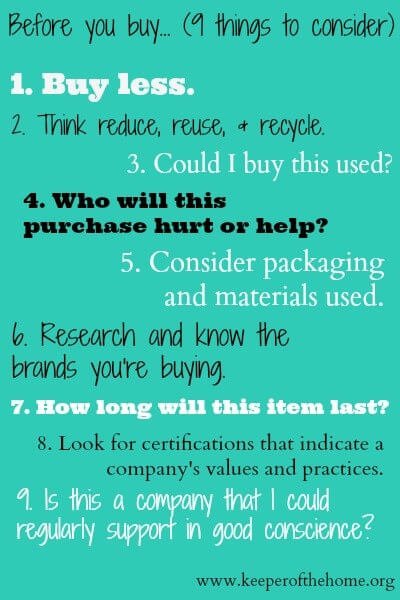
For us, this means choosing high-quality products made by companies with responsible and environmentally sound manufacturing processes, fair wages, safe working conditions, adequate training, and all those other qualities that make them a business we can buy from with a clean conscience.
Purchases like handmade wooden or eco-friendly toys for our children, organic cotton or wool clothes from particular factories, jewelry crafted by former sex-trade workers, or something as small and simple as recyclable pencils made from reforested wood and non-toxic inks.
I can’t tell you what to buy or not to buy (for goodness sake, I still don’t even know many of the things that I am willing to say yes or no to, let alone tell you what to do). We each need to do our own research and figure out which companies we can and want to support, and which products are feasible for us to begin purchasing differently.
But I’ve been doing a lot of thinking about it and I think these are a few good places to start.
1) Recognize that most major brands in North America (and indeed, the world) are owned by a handful of very large corporations. That’s not necessarily bad, but that brand you like so much with a picture of a quaint farm and the words “all natural!” on its label might actually be owned by someone else. Find out who and what your dollars are supporting.
2) Pick a few of the brands you buy frequently, and look them up. With a few clicks, you’d be amazed at what you learn about a company and their practices. Take Nestle, Old Navy, Starbucks, Burt’s Bees, for example. I’m not trying to make a statement about any of them, necessarily, but here’s what 5 minutes of Google searches turned up…
Nestle: Boycott, Company Spotlight, Code of Business Conduct, Unethical Business Practices.
Old Navy: Human Rights, Responsible Shoppers, Unethical Fashion Brands?
Burt’s Bees: Wikipedia, Environmental Sustainability, Behind the Label, Sustainable Change
Starbucks: Coffee Sourcing, Starbucks Cafe Practices, Farmer Equity Program Just a Logo?, CAFE Statement
3) Check out websites that are doing the research for you, like Free2Work, which rates companies based on where they stand in regards to modern day slavery.
4) Find more ethical shopping choices and commit to start making at least some of your purchases through them. The Art of Simple’s Ethical Shopping Guide is a great place to begin, although there are many other responsible businesses out there.
5) Pick one or two good companies that offer a variety of products your family uses frequently and start to buy from them on a regular basis. Because overhauling everything you purchase and use in your home? Impractical and totally overwhelming. Picking a couple places to make regular purchases of a few items? Definitely doable. This is one of my personal first plans of action.

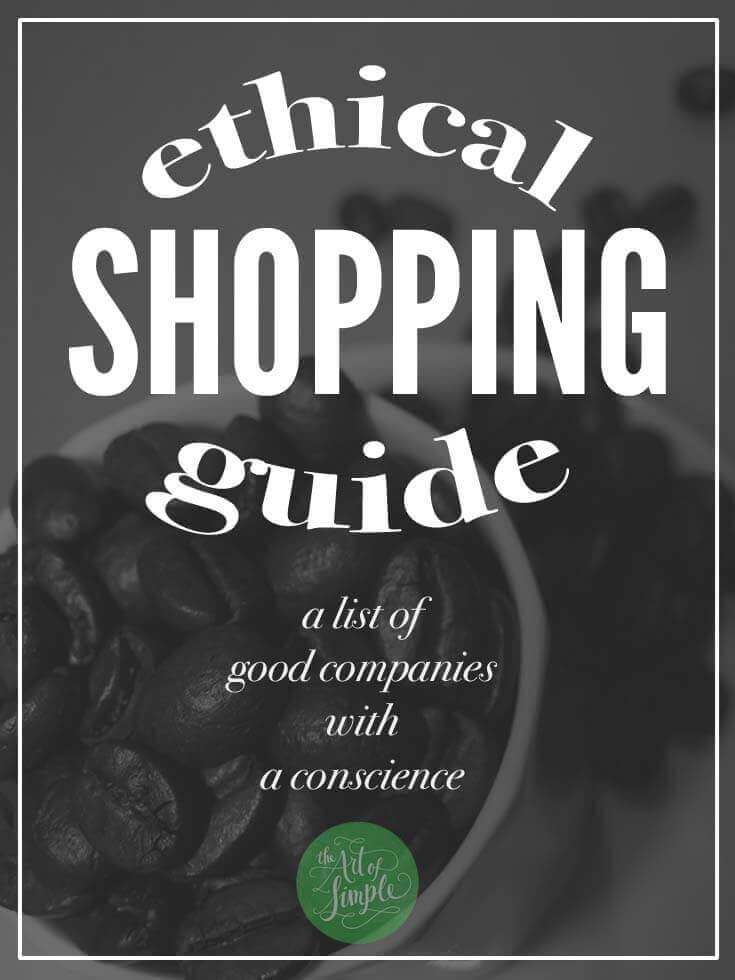
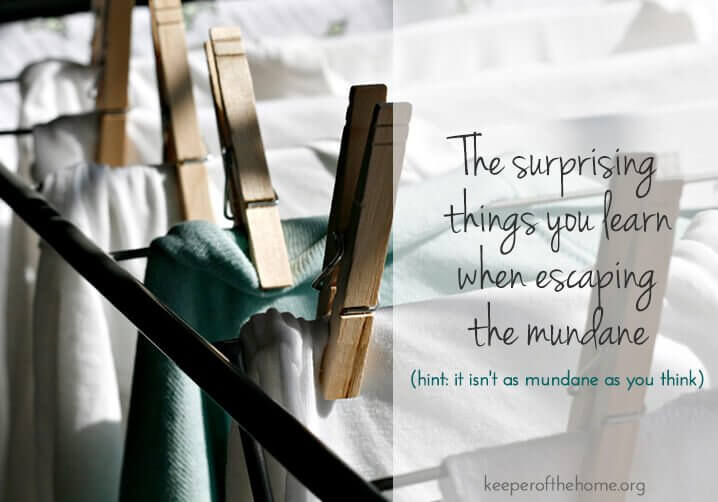
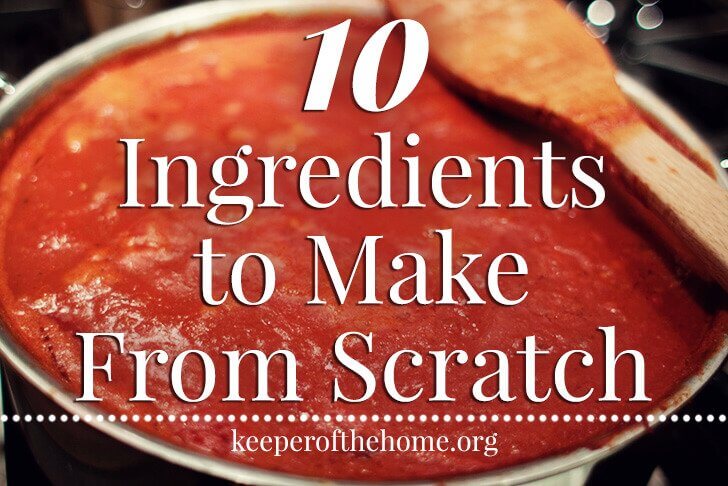

Great post – very educational and thought provoking. Thanks for your perspective.
Great article, Stephanie. I’ve been doing my best to buy sustainable, fair trade organic products whenever I can. It’s definitely a journey to embrace and find happiness in, rather than a destination, I think. Because so many products are available, then not available anymore. Especially from small companies that may lose the battle of staying competitive with the bigger corporations. Personally, I look for the niche companies, like Lundbergs (for rice), and Tega (for organic fair trade rooibos tea). They are small, but survive because they fill a niche and therefore aren’t so concerned (I think) with competing with large food manufacturers.
Yes, supporting small companies is fantastic! I don’t have anything against large corporations as a general rule, but I do know that many smaller companies remain more principled and intentional with who they support and what they buy, and as small business owners ourselves, we definitely know the value that small business ads to the economy.
Stephanie,
Our family spent just over 3 years, living in Asia, and we came home with the same feelings you expressed in your article. We are known around these parts as that crazy family that won’t buy Chinese products. When I’m questioned, it’s so hard to give a short, concise answer. There are so many reasons, as you explained. Thanks for sharing your heart on this, and assuring me I’m not alone.
By the way, wasn’t the Great Wall breathtaking?! 🙂
It’s great to know that someone else feels as we did. So you’re not the only crazy family after all! 🙂
And yes, the Great Wall is truly breathtaking. The scope is so immense, it’s hard to even comprehend. We loved it!
Now as much as I think Walmart has way too many cheap items, they do have some good stuff. I really like the Sam’s Choice Fair Trade or Organic coffee.
And I love my nephew, made in China, brought here 3 yrs ago.
How could anyone resist a little cutie pie nephew that was “made in China”? 🙂
And I’m totally not opposed to purchasing good items from large stores. I don’t love shopping at big box stores too much, but I still do it occasionally, and I think that if you can find great products there, then go for it! You’re actually voting with your dollars to say, “Hey Walmart, carry more products like this!” and when the big corporations begin to make better wholesale purchasing decisions like supporting fair trade, that carries a HUGE influence because of how much money they spend!
Great thoughts! I’ve been working on this problem for years now and I don’t have anything close to perfect solutions. I discussed the clothing problem with a close relative who used to work for a major clothing brand. She told me that she has visited factories in China and even the “good” ones are still very poor by our labor standards (although I hear that things are improving as the people there demand better wages and working conditions). It’s disheartening. Home goods (furniture, etc.) can be even more frustrating though. My imperfect solution is to buy less and buy used or vintage items. If I have to buy new, I make sure we invest as much money as is reasonable and get something that will last for a long time. This is actually my relative’s solution to the clothing problem as well … she said her personal solution is to buy used/vintage clothing or buy new clothes that will last for many years. Her opinion is that this is best way to be respectful of the factory workers. When we buy many cheap things that we then dispose of a few months later, we’re basically increasing demand for more stuff at a cheaper price, which is going to encourage poor production methods and bad labor conditions. Ultimately, living with less is best.
Thanks so much for this article. We had heard of this before, but you wrote in such great detail. We lived in Taiwan for a while and know the cost of smog and pollution. Thanks for your article an advice. I also wanted to share what we are trying to do with loose leaf tea. We work directly with a farmer who farms in Taiwan. Thought you’d like to know as an alternative to bigger companies like Teavana and Starbucks.
Maybe you’re rich and can afford to look at products that cost more. For the rest of us, saving money is must and it also helps the economy. The problem you’re trying to address is much more complex than just buying local to reduce pollution.
Nope, not rich. The way that I can afford products that cost more? By buying less stuff overall. Buying used when possible. Reusing things as much as I can. Keeping our lives simpler, and having less stuff to clutter up our homes.
You’re right, it is a more complex process than just buying local, or just buying from specific companies (I don’t think local is the only option– we can support non-local but ethical and responsible companies from other places). But I do think that we have to start somewhere, and that usually begins at a personal, grassroots level, but changing out individual choices and buying patterns.
Right of the bat, why attack Stephanie for sharing a topic that she herself said she doesn’t have all the answers to but was sharing her experiences? I personally feel that she’s right, we NEED to be more selfless in our spending habits realizing that these things DO affect more than just us! There was no reason to be rude here!
I think one of the cheapest ways to not support unethcial production is to buy used. Almost everything we own was purchased at a thrift store, garage sale or given by a relative. Because I can’t afford to buy organic, fair trade clothing, mattresses or anything else for that matter, 90% of everything is used.
Thanks. I already do many of the things you mentioned, but I never even realized pollution in China could be another reason for doing so!
Thanks for posting this! I have been thinking about these same things recently, and you’ve provided some great resources to help me make some changes.
{Kathy} What a great article! I appreciate these practical tips for shopping with more of a conscience. I am going to check out the guides